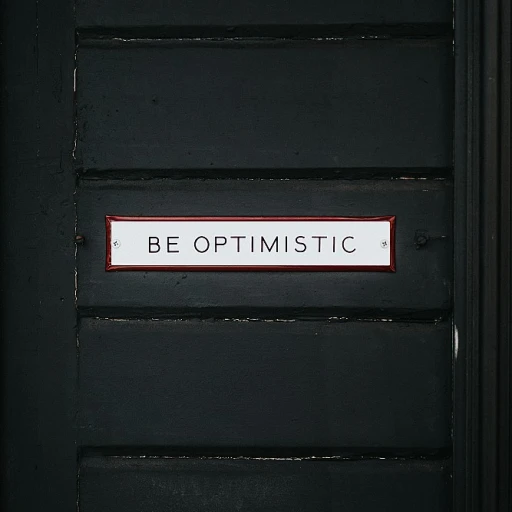
Understanding the Role of Storytelling in HR
Storytelling: A Powerful Tool for HR Communication
Storytelling has long been recognized as a powerful tool in the realm of human resources communication. It provides a means to articulate complex concepts in an engaging and relatable manner. Whether it is through a storyline workshop or an articulate training session, the narrative technique captures the attention of employees, facilitates learning, and fosters a deeper connection to the content.
In an HR context, storytelling provides an opportunity to present HR policies and procedures in a way that resonates with employees on various levels. By incorporating advanced instructional design strategies like elearning development, instructional designers can create compelling courses that motivate and inspire the audience. This method proves effective in both in-person and virtual event settings, capitalizing on the interactive elements offered by modern training tools such as scrolling panels and sliders dials.
When imagining a well-structured storyline project, one must consider variables and conditions that make the narrative custom to the organizational culture and objectives. Throughout the day workshop, these elements are fine-tuned to build an immersive learning experience, making it easier for team members to understand and embrace new ideas. As a part of elearning courses, this technique allows employees to gain a master level understanding of complex HR topics.
For those looking to dive deeper into understanding the role of storytelling in HR, taking a specific storyline advanced course can be quite beneficial. Completion of such a course, which includes practical application of articulate storyline and custom storyline project creation, equips HR professionals with the skills needed to drive impactful narratives in their workplace.
Learn more about enhancing communication skills in human resources by exploring the role of an account executive course, and discover how strategic storytelling can transform HR communication into a powerful driver of change.
Designing an Effective Storyline Workshop
Crafting an Immersive Storyline Experience
Designing a captivating storyline workshop involves creating learning experiences that draw on multiple instructional design principles. To truly engage participants, instructional designers should focus on crafting activities that stimulate both the intellect and the emotions. A well-designed storyline workshop allows participants to actively engage with the content, creating an immersive environment that heightens learning retention. These workshops often incorporate a range of elements, such as scrolling panels, sliders, and dials. These tools can create interactive experiences that are both informative and entertaining. Key Elements to Incorporate:- Articulate Storyline: Leveraging articulate storyline software can facilitate the creation of dynamic and interactive content.
- Scenario-Based Learning: Creating realistic scenarios helps participants apply concepts in practical settings.
- Custom Courses with Variables: These allow for personalized learning experiences, catering to individual learning paths.
- Team Collaboration: Engage your team in the planning and development phase to bring diverse perspectives into the storyline project.
- Incorporate Advanced Techniques: Utilize video screen recordings and advanced storyline features to foster a richer learning environment.
- Master Level Challenges: To address varying proficiency levels, consider incorporating master level problem-solving tasks.
Engaging Employees through Storyline Workshops
Creating Interactive and Personalized Workshops
Engaging employees through storyline workshops demands a thoughtful blend of creativity and technology. Whether you're an instructional designer or part of the HR team, creating an engaging learning experience is essential. These workshops should not only inform but also inspire and connect with participants on a personal level. One effective approach is to incorporate elements like scrolling panels and sliders dials. These tools can help create a dynamic and interactive environment where employees feel actively involved in their learning process. Interactive learning experiences are favored in delicate HR topics and scenarios, ensuring employees are immersed and retain more information.Harnessing the Power of Articulate Storyline
Articulate Storyline is a crucial tool in the arsenal of any team looking to build engaging workshops. It allows for advanced course creation with customizable variables and conditions that tailor the course to different learning paths. This degree of customization ensures the storyline training is relevant and specific to the needs of all participants. Through articulate storyline projects, workshops can utilize screen recordings or create scenario-based learning that reflects real-life HR challenges. It makes the learning process more authentic and replicable for employees, enhancing their understanding and problem-solving skills within the workplace context.Fostering a Collaborative Learning Environment
To engage teams effectively, creating a collaborative atmosphere where open dialogue and idea sharing is encouraged is crucial. Facilitators should provide participants with ample opportunities to contribute and ask questions. This can be achieved in various ways, from virtual events to in-person day workshops. By encouraging shared learning experiences, employees feel valued and more connected to the material. Customizing the workshop to address specific team dynamics or organizational culture can further enhance its effectiveness. This personalization, guided by instructional design principles, ensures that the elearning development process resonates deeply with each attendee, fostering a more profound level of engagement and learning retention. In summary, engaging employees effectively in storyline workshops entails the use of interactive tools, advanced customization options, and the cultivation of a collaborative learning atmosphere. For more insights on the key success factors in enhancing HR communication, consider exploring this resource on successful HR-related workshops. It provides practical strategies and detailed perspectives in creating impactful learning experiences within HR contexts.Overcoming Challenges in Storyline Workshops
Addressing Common Obstacles in Storyline Workshops
Storyline workshops can be a powerful tool for enhancing HR communication, but they are not without their challenges. Understanding these obstacles and how to overcome them is crucial for creating effective learning experiences. Here are some common challenges faced in storyline workshops and strategies to address them:
- Technical Difficulties: One of the most frequent issues is dealing with technical glitches, especially when using tools like Articulate Storyline. To mitigate this, ensure that your team is well-versed in the software through comprehensive storyline training and elearning development courses. Regular practice with features like scrolling panels and sliders dials can also help.
- Engagement Levels: Keeping participants engaged throughout the workshop can be challenging. Incorporating interactive elements such as screen recordings and variables conditions can make the sessions more dynamic. Encourage participants to learn articulate by actively involving them in project-based learning.
- Customizing Content: Tailoring the workshop to meet the specific needs of your organization is essential. Work with instructional designers to create custom courses that align with your HR goals. This might involve building storyline projects that reflect real-world scenarios your employees face.
- Time Constraints: A day workshop might not be sufficient for mastering advanced concepts. Consider breaking the workshop into multiple sessions or offering a virtual event to provide flexibility. This allows participants to learn at their own pace and revisit complex topics.
- Resource Allocation: Ensuring you have the right resources, including skilled instructional designers and adequate technology, is crucial. Plan your storyline workshop well in advance to allocate resources effectively and avoid last-minute hurdles.
By anticipating these challenges and preparing accordingly, you can enhance the effectiveness of your storyline workshops, ultimately improving HR communication within your organization.
Measuring the Impact of Storyline Workshops on HR Communication
Evaluating the Effectiveness of Storyline Workshops
To gauge the efficacy of a storyline workshop in enhancing HR communication, several measurement strategies are employed. As with any effective instructional design strategy, clear objectives are vital for determining the success of the storyline project. The application of articulate storyline tools and methodologies ensures that these objectives can be tracked through various data points.- Learning Impact: The extent to which the workshop influences learning experiences is a primary metric. Before and after the training, assessments should be conducted to evaluate what participants learn, spotlighting the improvement in comprehension of HR concepts.
- Participant Engagement: Tracking engagement levels during the elearning course is critical. By utilizing tools like sliders, dials, and scrolling panels, instructional designers can monitor participant interaction and involvement throughout the storyline training. High engagement levels often reflect a successful workshop.
- Skill Application: After the event, it’s essential to assess how well participants apply the skills acquired. Evaluating their ability to use learned variables and conditions in real-life HR scenarios is a significant indicator of the workshop’s success.
- Feedback and Survey: Gathering feedback from attendees provides qualitative data. Surveys can articulate what aspects of the workshop were most beneficial and where improvements are needed, contributing to refining future storyline advanced strategies.
Case Studies: Successful Storyline Workshops in HR
Real-World Applications of Storyline Workshops in HR
Storyline workshops have been making waves in the realm of human resources, offering innovative ways to enhance communication and engagement. By examining successful case studies, we can gain insights into how these workshops can be effectively implemented.
Case Study 1: Transforming Onboarding with Storyline
One organization revamped its onboarding process by integrating a storyline workshop. The HR team collaborated with instructional designers to create a storyline project that guided new hires through their first days. This project utilized articulate storyline to build interactive elearning courses, complete with scrolling panels and sliders dials. The result was a more engaging and informative onboarding experience, which significantly reduced the time needed for new employees to become productive.
Case Study 2: Enhancing Leadership Training
Another company focused on leadership development by organizing a day workshop using storyline advanced techniques. The workshop aimed to create custom learning experiences that challenged participants with variables conditions and screen recordings. By the end of the course, participants reported a deeper understanding of leadership principles and improved communication skills. This approach not only engaged the team but also fostered a culture of continuous learning.
Case Study 3: Boosting Employee Engagement
In a bid to boost employee engagement, a firm conducted a virtual event centered around storyline training. The HR department worked with instructional designers to develop a storyline project that included interactive elements and based learning scenarios. Employees were encouraged to learn articulate techniques and apply them in real-world situations. The feedback was overwhelmingly positive, with many employees expressing a newfound enthusiasm for their roles.
These case studies illustrate the potential of storyline workshops to transform HR communication. By leveraging advanced tools and techniques, organizations can create impactful learning experiences that resonate with employees and drive meaningful change.












